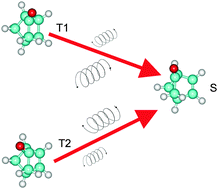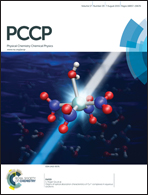A computational protocol for the study of circularly polarized phosphorescence and circular dichroism in spin-forbidden absorption
Abstract
We present a computational methodology to calculate the intensity of circular dichroism (CD) in spin-forbidden absorption and of circularly polarized phosphorescence (CPP) signals, a manifestation of the optical activity of the triplet–singlet transitions in chiral compounds. The protocol is based on the response function formalism and is implemented at the level of time-dependent density functional theory. It has been employed to calculate the spin-forbidden circular dichroism and circularly polarized phosphorescence signals of valence n → π* and n ← π* transitions, respectively, in several chiral enones and diketones. Basis set effects in the length and velocity gauge formulations have been explored, and the accuracy achieved when employing approximate (mean-field and effective nuclear charge) spin–orbit operators has been investigated. CPP is shown to be a sensitive probe of the triplet excited state structure. In many cases the sign of the spin-forbidden CD and CPP signals are opposite. For the β,γ-enones under investigation, where there are two minima on the lowest triplet excited state potential energy surface, each minimum exhibits a CPP signal of a different sign.


 Please wait while we load your content...
Please wait while we load your content...